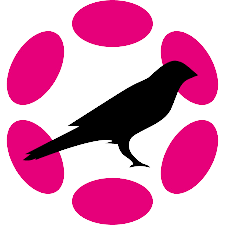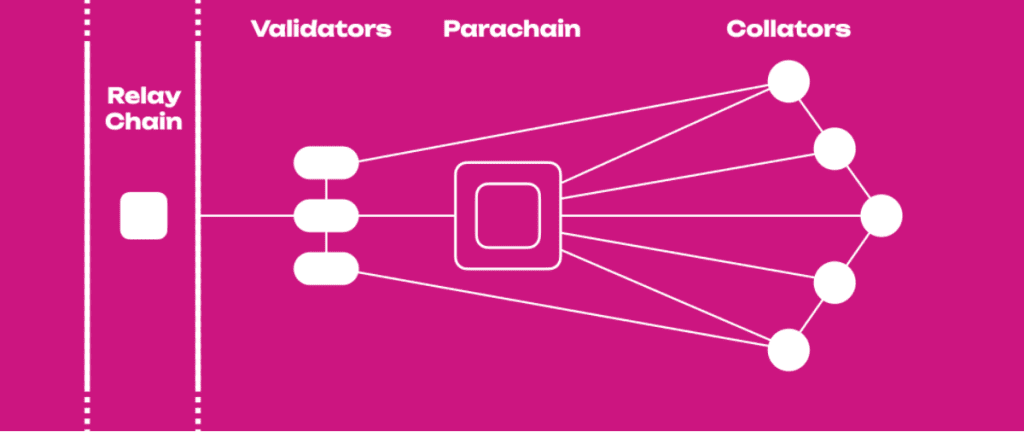Welcome aboard our exploration of parachains, an intriguing innovation in the field of blockchain technology. Emerging from the depths of decentralized finance (DeFi), parachains bring a whole new level of interoperability, scalability, and specialization. They’re not just an adjunct feature but an integral part of multi-chain platforms like Polkadot and Kusama. They create a cosmos of interconnected blockchains, each with its own unique features and functions.
Parachains are like the tributaries of a great river system. They feed into the central relay chain, each bringing its own flavor of data and operations. This brilliant concept is fueling the transformation of the blockchain ecosystem, making it more cohesive, efficient, and effective. Hold on tight as we dive deeper into the world of parachains, an odyssey that’s redefining the blockchain horizon.
Understanding Parachains – A Deep Dive into Polkadot & Kusama




So what exactly are these parachains we’re raving about? Well, they’re individual blockchain networks that plug into a larger ecosystem, like Polkadot or Kusama. Picture it as a high-speed railway network, where each local train (parachain) connects to a central line (relay chain) that ensures efficient traffic management and connectivity.
But don’t be fooled. Despite their shared infrastructure, each parachain retains its unique identity and capabilities. This gives rise to a vibrant ecosystem of chains, each catering to specific applications and use-cases. They can be tailor-made for everything from DeFi and smart contracts to identity management and data storage. On the other hand, Polkadot and Kusama serve as the motherships, offering shared security and cross-chain communication, like a well-oiled machine.
The Framework of Parachains: Functionality and Operation
The world of parachains operates like a finely tuned symphony, with each section playing its unique role. Parachains interact with the relay chain, transmitting information, ensuring security, and enabling cross-chain communication. This remarkable interplay is achieved via the Cross-chain Message Passing (XCMP) protocol, a bit like a universal translator for blockchains.
Here’s the real genius behind parachains: they’re scalable. Unlike traditional blockchains that strain under heavy traffic, parachains can process transactions in parallel. This leads to improved capacity and reduced bottlenecks. And let’s not forget the role of validators and collators, the unsung heroes who maintain network integrity. With such a potent mix of features and capabilities, it’s clear parachains are not just a passing fad. They’re the future, and the future is now.
Unveiling the Parachain Auctions
Parachain auctions aren’t your typical bidding war for an antique piece. No, they’re a groundbreaking way to secure a spot on the Polkadot and Kusama networks. It’s a democratic process, based on a unique principle – the highest bidder doesn’t always win. Instead, it’s about random snapshots of bids, a mechanism that levels the playing field.
But how do you, as an enthusiast or a developer, get involved? It all begins with crowdloans, where you back your chosen project by locking up your DOT or KSM tokens. In return, you get rewards from the project if they secure a parachain slot. So, participating in a parachain auction doesn’t just allow you to be part of the network’s growth, it’s also a journey into the fascinating world of decentralized fundraising.
Parachain Testing on Rococo
Rococo is Polkadot’s playground and it’s here that the future of parachains is being shaped. It’s a testnet, a kind of sandbox for developers to trial their parachains and perfect the nuances of cross-chain communication. It’s on Rococo that these bold ideas are tested, tweaked, and readied for the big leagues.
The action on Rococo isn’t just about technical testing though. It’s about collaboration and community. Developers from around the world join forces here, learning from each other’s innovations, and collectively advancing the parachain technology. So, when you peek into Rococo, you’re not just looking at a testnet. You’re witnessing the future of blockchain interoperability being forged.
Dissecting the Parachains
When we delve deep into the anatomy of a parachain, we find a marvel of modern technology. It all revolves around a set of nodes called collators. They collate transactions and produce proofs for validators on the relay chain. It’s like a well-oiled assembly line, where each part performs its task with precision.
But there’s more. The heart of a parachain’s functionality is the Parachain Development Kit (PDK), which provides developers the tools to build their bespoke chains. Meanwhile, the Cross-Chain Message Passing (XCMP) acts as the network’s nervous system, enabling communication between different parachains. As we dissect the parachain, we realize it’s more than just a cog in the Polkadot and Kusama machines. It’s a revolution in its own right, disrupting our notion of what blockchain networks can achieve.
The Science Behind Parachains


At the heart of parachains is the process of state transitions, a complex dance of data and algorithms. But don’t worry, we’re here to make it digestible. It’s all about transactions changing the state of the parachain. Think of it like a game of chess: each move (or transaction) alters the state of the game board (the parachain).
State transitions are handled by the parachain’s runtime, an integral part of its core. This runtime validates transactions, checks consensus rules, and processes state changes. But here’s the trick: this all happens without compromising the network’s security. The relay chain validators handle this part, adding an extra layer of protection. Thus, state transitions are not just a mechanism to change the parachain’s state, they’re a demonstration of how parachains maintain their integrity amidst constant evolution.
Why Choose Parachains? The Value Proposition of Polkadot & Kusama Networks
“Why parachains?” you might ask. Well, parachains offer solutions to longstanding challenges in the blockchain realm. They’re scalable, thanks to their parallel processing power. They provide interoperability, fostering communication among diverse blockchains. And they are customizable, each built for a unique purpose and audience.
But there’s more to the story. With Polkadot and Kusama, it’s about being part of an innovative community. It’s the opportunity to participate in parachain auctions, and have a say in the network’s future. It’s about contributing to a network that’s pushing the boundaries of what’s possible with blockchain. So why choose parachains? Because they offer a blend of technical brilliance and community spirit that is hard to resist.
The Journey Ahead with Parachains
As we move forward in our journey with parachains, we’re exploring uncharted territory. We’re witnessing the birth of a new blockchain era, where siloed chains are a thing of the past, replaced by a thriving ecosystem of interoperable parachains.
Yes, there are challenges. And yes, there are unknowns. But that’s what makes this journey exciting. We’re not just passive spectators. We’re participants, shaping the future of blockchain one parachain at a time. So strap in, and join us as we traverse the next frontier of blockchain technology.









